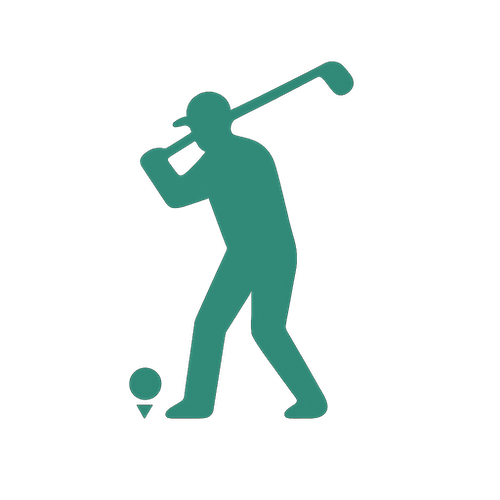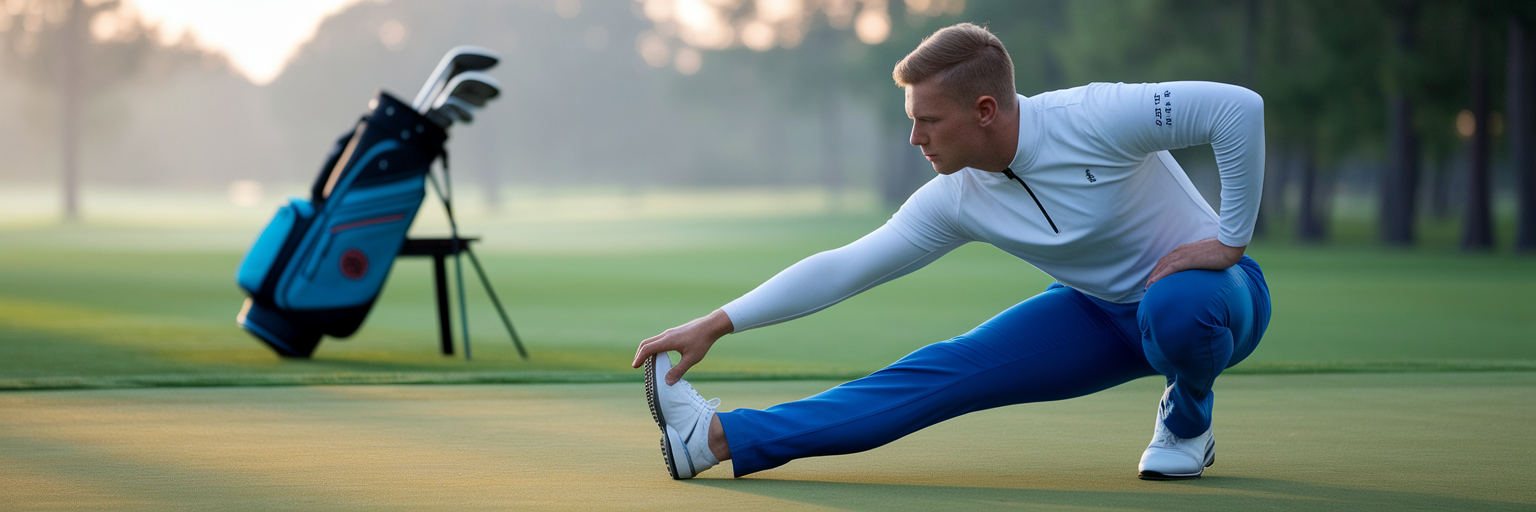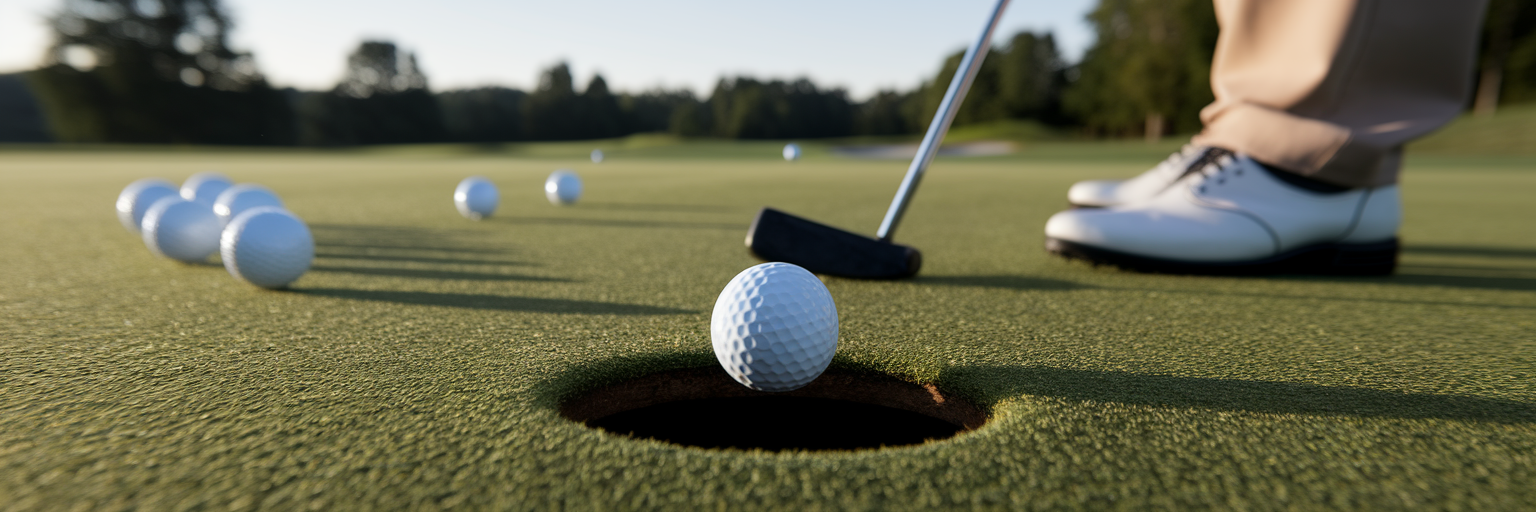A Beginner's Guide to the Perfect Golf Warm Up
Why Warming Up Is Your Most Important Shot of the Day
We all know the feeling. You arrive at the course, excited for the day, and your first instinct is to grab your driver and head straight to the first tee. This common impulse, however, often leads to a stiff, inconsistent start and even increases the risk of pulling a muscle. That first tee shot feels tight, the next few are unpredictable, and you spend the front nine just trying to find your rhythm.
A proper beginner golf warm up is not a chore. It is the first strategic move of your round. It prepares your body and mind for the game ahead, offering three clear benefits. First, it helps prevent muscle strain by gradually waking up your body. Second, it improves flexibility, allowing for a smoother, more powerful swing. Finally, it gives you a moment to mentally shift gears, leaving the day's stress behind and focusing on your game. Learning how to play golf effectively begins with this simple, preparatory ritual.
Dynamic Movements to Awaken Your Golf Body
Before you even touch a club, your priority should be getting your body ready to move. This is where a dynamic golf stretching routine comes in. Unlike static stretching, where you hold a position for 30 seconds or more, dynamic stretching involves active, controlled movements. Think of it as warming up with motion, which is exactly what your body needs before the athletic act of swinging a golf club. Static stretching is fantastic for recovery after your round, but doing it beforehand can temporarily reduce muscle power.
As health experts from the NHS advise, a proper warm-up should gradually raise your heart rate and increase blood flow to your muscles. This is vital for preventing injuries in rotational sports like golf. The goal is to prepare your muscles for action, not put them to sleep.
| Factor | Dynamic Stretching (Pre-Round) | Static Stretching (Post-Round) |
|---|---|---|
| Purpose | Activates muscles and increases blood flow | Relaxes muscles and improves long-term flexibility |
| Movement | Active, controlled movements through a full range of motion | Holding a fixed position for an extended period |
| Effect on Swing | Prepares the body for explosive, rotational movement | Can temporarily reduce muscle power if done before playing |
| Best Time to Use | Before you play or practice | After your round to aid recovery |
Here are a few essential dynamic movements for your pre round golf warm up. Perform each for about 30 seconds:
- Leg Swings: Holding onto your golf bag or a cart for balance, swing one leg forward and backward smoothly. Then, turn and swing it side to side across your body. This opens up your hips, which are crucial for proper weight transfer in your swing.
- Torso Twists: Stand with your feet shoulder-width apart and cross your arms over your chest. Gently rotate your upper body from side to side, keeping your lower body stable. This mimics the core rotation you need for power.
- Arm Circles: Extend your arms out to your sides and make small circles, gradually making them larger. Do this in both forward and backward directions to warm up your shoulders for a full, unrestricted swing.
Activating Key Muscles with Your Golf Club
Once your body is moving, it is time to wake up the specific muscles that power your golf swing. Your club is the perfect tool for this. Muscle activation is simply about sending a signal to your core, glutes, and back, telling them it is time to work. These exercises bridge the gap between general movement and the golf swing itself.
Here is how to warm up for golf using just your club:
- Club-Across-Shoulders Twists: Place a club behind your neck, resting it across your shoulders. Get into your golf posture and rotate your torso back and forth. This helps you feel the separation between your upper and lower body, a key component of a powerful swing.
- Overhead Side-Bends: Hold your club with both hands and lift it straight overhead. Gently bend from side to side, feeling a stretch along your ribs and back. This lengthens the latissimus dorsi muscles, allowing for a wider swing arc.
- Thread the Needle: Get on your hands and knees. Place one hand behind your head and rotate that elbow up toward the sky. Then, bring it down and "thread" it through the space under your body. This is fantastic for improving mid-back mobility, which many beginners lack.
Finally, add a set of 10 bodyweight squats. Your glutes are the engine of your swing, providing stability and power. Activating them ensures your foundation is solid before you even hit a ball.
From Practice Swings to Pure Contact
With your body prepared, head to the driving range. The goal here is not to hit the ball as far as you can. Instead, this phase is about finding your rhythm and making solid contact. Rushing this step is like trying to write a sentence before you know the words. It just leads to frustration.
Follow this progressive routine to find your tempo for the day:
- Start with Practice Swings: Take several slow, smooth swings without a ball. Focus entirely on the feeling of balance and tempo. This sets the metronome for your entire round.
- Begin with a Forgiving Club: Grab a high-lofted club like a pitching wedge or 9-iron. These clubs are easier to hit and will help you build confidence with early success.
- Focus on Clean Contact: Use simple golf practice drills for beginners, like hitting small, half-swing shots. Your only goal is to make crisp, clean contact. Listen for that satisfying click of the clubface meeting the ball purely.
- Gradually Build Your Swing: Once you are making consistent contact, move to three-quarter swings and then finally to full swings. Maintain the same smooth tempo you established in your practice swings.
- Work Through Your Bag: Only after you feel a consistent rhythm with your short irons should you move to your mid-irons and, eventually, the driver. This ensures you are building your swing on a solid foundation.
Fine-Tuning Your Feel on the Practice Green
Many beginners make the mistake of finishing their warm-up at the driving range. Yet, with nearly half of all shots in a typical round happening on or around the green, skipping short game practice is a costly error. A quick 5 to 10 minutes on the practice green can remove the uncertainty from your first few chips and putts on the course.
Here is a simple and effective routine:
- Putting: Start by making a few short putts from 2-3 feet away. The goal is simply to see the ball drop into the hole and hear that sound. This builds immediate confidence. After that, move to long-range "lag" putts. Focus entirely on getting the speed right, not on making the putt. This helps you quickly get a feel for the green speed for the day.
- Chipping: Take one wedge and hit 5-10 chips to a specific target. This dials in your feel for contact and helps you see how the ball will react and roll out on the greens.
This brief routine prepares you for the shots that truly determine your score, ensuring you feel ready for any situation the course presents.
Start Every Round with Confidence
Your warm-up is your first win of the day. By following this simple, repeatable ritual, you give yourself the best possible chance for success. The perfect beginner golf warm up covers four key stages: dynamic movements to awaken your body, club-assisted activation to prime your golf muscles, progressive range swings to find your rhythm, and short game practice to fine-tune your feel.
This entire routine takes just 15 to 20 minutes, but its impact lasts the entire round. A consistent warm-up is one of the fastest ways to improve consistency, prevent injury, and feel more confident from the very first tee. See it not as a task, but as an investment in your enjoyment. This preparation is a fundamental skill in your journey of learning how to play golf, empowering you to have more fun and play better every time you step on the course.









